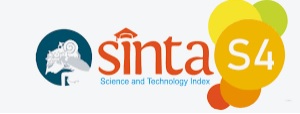Klasifikasi Sentimen Opini Pada Aplikasi Guitar Tuner
Abstract
Current technological advances have an impact on various fields, including music applications. Guitar Tuna and other popular music applications can have an impact on public perception, customer decisions, and company reputation. This study analyzes user sentiment for Guitar Tuna using the Naive Bayes and Support Vector Machine (SVM) algorithms. Play Store is the place where data is obtained consisting of 626 neutral reviews, 234 positive reviews, and 2 negative reviews that have gone through several stages, namely preprocessing, classification, labeling, crawling, and evaluation models. The analysis resulted in a Naive Bayes accuracy of 0.95 and SVM of 0.97. The results of the Naive Bayes classification showed the highest value in the neutral sentiment precision parameter of 0.94. In the (SVM) method, positive sentiment gets the highest value at a precision of 1, while the highest recal and f1-score values are achieved by neutral sentiment with values 1 and 0.98 in the SVM method.
Keywords: Naïve Bayes; Support Vector Machine; Sentiment Classification; Opinion Analysis; Guitar Tuna.
                                                                    Â
Abstrak
Kemajuan teknologi saat ini berdampak pada berbagai bidang, termasuk aplikasi musik. Guitar Tuna dan aplikasi musik populer lainnya dapat berdampak pada persepsi publik, keputusan pelanggan, dan reputasi perusahaan. Studi ini menganalisis sentimen pengguna untuk Guitar Tuna dengan menggunakan algoritma Naive Bayes dan Support Vector Machine (SVM). Play Store ialah tempat perolehan data terdiri dari 626 ulasan netral, 234 ulasan positif, dan 2 ulasan negatif yang sudah melakukan sejumlah tahapan yakni preprocessing, classification, labeling, crawling, serta evaluation model. Penganalisisan tersebut menghasilkan akurasi Naive Bayes sebesar 0,95 dan SVM sebesar 0,97. Hasil klasifikasi Naive Bayes menunjukan nilai tertinggi pada parameter precision sentimen netral sebesar 0,94. Pada metode (SVM), sentimen positif mendapatkan nilai tertinggi pada precision sebesar 1, sedangkan nilai tertinggi recal dan f1-score dicapai sentimen netral dengan nilai 1 dan 0.98 pada metode SVM.
Â
Keywords
References
L. Pang and S. Lee, “‘Opinion Mining and Sentiment Analysis,’†Found. Trends® Inf. Retrieval, vol. 2, no. 1, pp. 1-135, 2008.
E. K. and S.-M. Hovy, “‘Determining the sentiment of opinions,’†Proc. 20th Int. Conf. Comput. Linguist. (COLING ’04), Stroudsburg, PA, USA Assoc. Comput. Linguist. pp. 1367., 2004.
D.M. Priatama, “Perancangan Dan Implementasi Tuner Gitar Berbasis Fast Fourier Transform Pada Platfrom Ios,†e-Proceeding Eng. Vol.3, No.2 Agustus, 2016.
D. T. L. Aah Sumiah, “Rancang Bangun Aplikasi Sinkronisasi Nada Pada Tuning Gitar Dengan Menggunakan Algoritma Fast Fourier Transform Berbasis Android,†JEJARING (Jurnal Teknol. dan Manaj. Inform. Vol. 6 Nomor 1,p-ISSN 2527-3930, e-ISSN 2614-5448 https//journal.uniku.ac.id/index.php/jejaring, 2021.
F. E. Wibisono, R., & Gunawan, “Penerapan Algoritma Naïve Bayes dan SVM pada Klasifikasi Spam Email.,†J. Ilmu Komput. dan Informasi, 13(3), 145-152., 2020.
D. Susanto, A. B., & Anggraini, “Implementasi Naïve Bayes dan SVM untuk Klasifikasi Review Produk E-Commerce.,†J. Teknol. Inf. dan Komunikasi, 9(2), 120-128., 2018.
A. Pratama, I. D., & Widodo, “Penggunaan Metode Naïve Bayes dan SVM dalam Analisis Sentimen Pelanggan pada Aplikasi Transportasi Online.,†J. Rekayasa Teknol. Informasi, 14(1), 65-72., 2021.
N. F. Hidayah, K. P. Kartika R., and S. N. Budiman, “‘Penerapan Metode Naive Bayes Dalam Analisis Sentimen Aplikasi Sentuh Tanahku Pada Google Play,’†JATI (Jurnal Mhs. Tek. Inform., vol. 6, no. 2, pp. 679–683, 2022, doi 10.36040/jati.v6i2.5610., 2022.
A. S. Rahayu, “Komparasi Algoritma Naïve Bayes Dan Support Vector Machine (SVM) Pada Analisis Sentimen Spotify,†J. Sist. Komput. dan Inform. Hal 349−354 Vol. 4, Nomor 2, e-ISSN 2685-998X DOI 10.30865/json.v4i2.5398, 2022.
A. Ariq, “Analisis Sentimen Positif Aplikasi GuitarTuna Dan Fender Guitar Tuner Dengan Menggunakan Metode Algoritma Naïve Bayes Dan Support Vector Machine,†UPN “Veteran†Jakarta, Fak. Ilmu Komputer, S1 Sist. Inf. [www.upnvj.ac.id - www.library.upnvj.ac.id - www.repository.upnvj.ac.id], 2024.
M. M. A. Wijaya, Meilinda, “Analisis Sentimen Ulasan Aplikasi Shazam Di Google Play Store Menggunakan Support Vector Machine,†Zo. J. Sist. Informasi, Vol. 6No. 1,page 197-207, 2024.
C. Wulandari, “Analisis Sentimen Aplikasi Spotify Pada Ulasan Pengguna di Google Play Store Menggunakan Metode Support Vector Machine,†KLIK Kaji. Ilm. Inform. dan KomputerISSN 2723-3898 (Media Online)Vol 4, No 5, April. Hal 2588-2595DOI 10.30865/klik.v4i5.1762 https//djournals.com/klik, 2024.
B. N. S. A. Nurian, “Analisis Sentimen Ulasan Pengguna Aplikasi Google Play Menggunakan Naive Bayes,†JITET (Jurnal Inform. dan Tek. Elektro Ter. Vol.11 No.3 S1, pISSN2303-0577 eISSN2830-7062 http//dx.doi.org/10.23960/jitet.v11i3%20s1.3348, 2023.
G. Boudin, F., & Gallina, “A Comparison of Pre-trained Language Models for Multi-Document Summarization,†, Ljubljana, Slov. © 2021 IW3C2 (International World Wide Web Conf. Committee), Publ. under Creat. Commons CC-BY 4.0 Licens. ACM ISBN 978-1-4503-8313-4/21/04. https//doi.org/10.1145/3442442.3451375, 2021.
K. Kannan, R., Gurusamy, V., & Somasundaram, “Sentiment Analysis Using Deep Learning Techniques for Business Intelligence,†Proc. Int. Conf. Intell. Comput. Control Syst. (ICICCS), pp. 1019-1024., 2021.
J. S. R.-M. et Al., “A systematic review of text mining techniques and applications in finance,†Expert Syst. with Appl. vol. 158, p. 113464, 2020.
Y. Zhang, H., & Li, “An Improved Naive Bayes Algorithm for Text Classification,†IEEE Access, vol. 9, pp. 81248-81256, 2021.
D. M. W. Powers, “Evaluation: From Precision, Recall and F-measure to ROC, Informedness, Markedness & Correlation,†J. Mach. Learn. Technol. vol. 2, no. 1, pp. 37-63, 2020.
D. Juang, “Analisis Spam Dengan Menggunakan Naive Bayes,†J. Teknol. Inf. dan Komunikasi, vol. 2, no. 1, pp. 10-16, 2016.
C. Triawati, “Metode Pembobotan Statistical Concept Based untuk Klastering dan Kategorisasi Dokumen Berbahasa Indonesia Statistical Concept Based Weighting Method for Indonesian Language Document Clustering and Categorisation,†J. Inform. vol. 5, no. 2, pp. 90-100, 2009.
S. S. Berutu, “Text Mining dan Klasifikasi Sentimen Berbasis Naive Bayes Pada Opini Masyarakat terhadap Makanan Tradisional,†J. Teknol. Informasi, vol. 8, no. 3, pp. 45-51, 2022.
How To Cite This :
Refbacks
- There are currently no refbacks.











